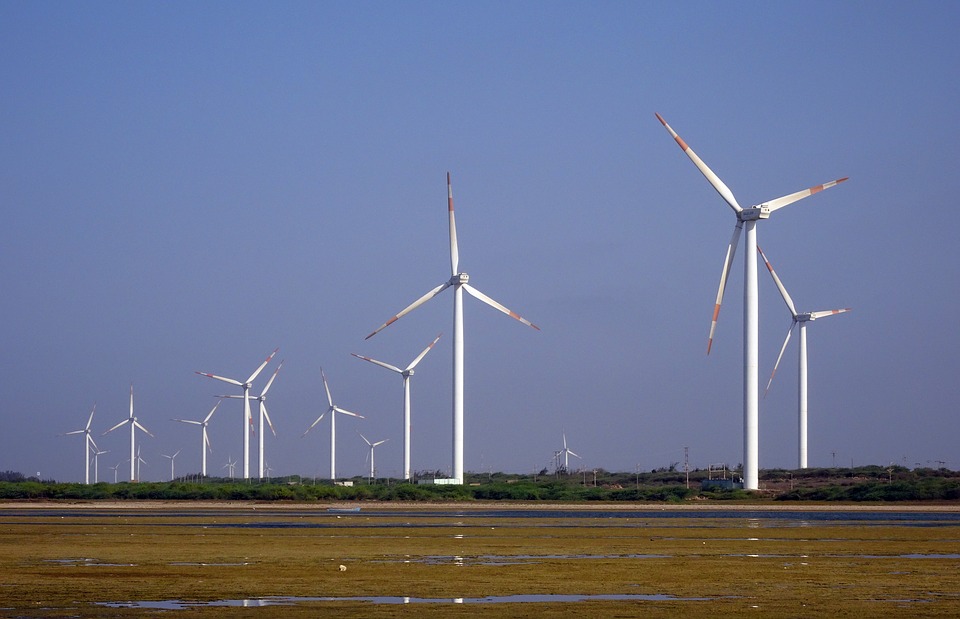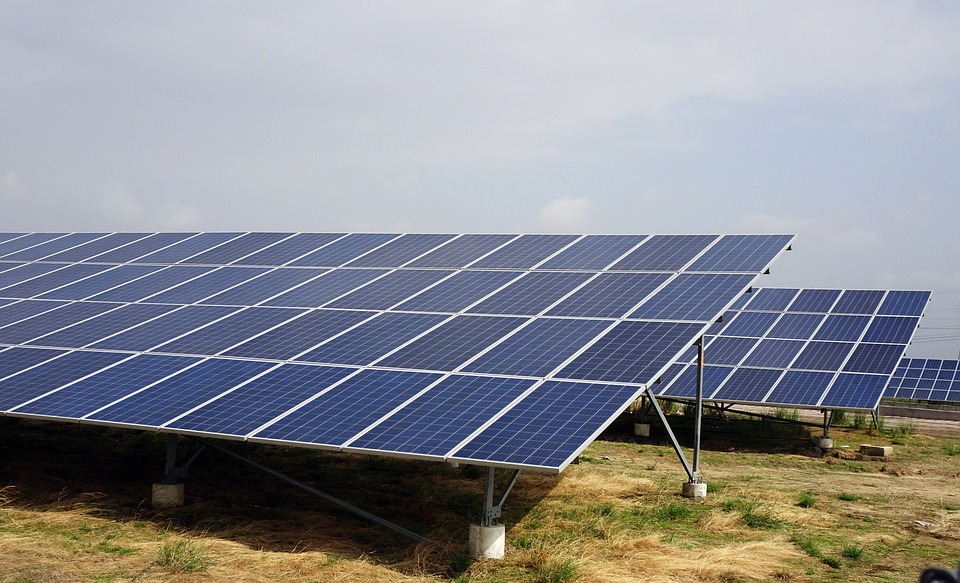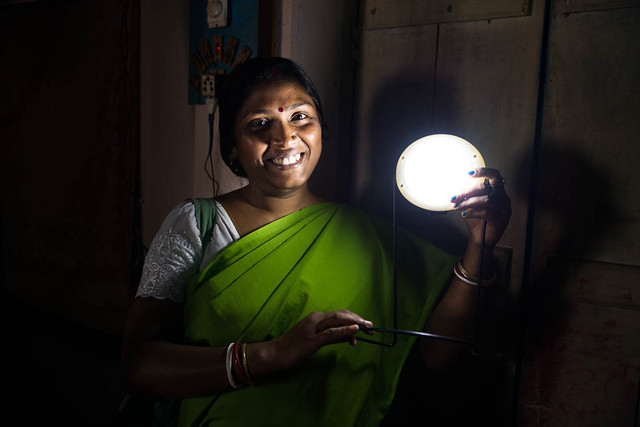Solar and wind energy projects in India need an impact assessment framework
Energy generation choices are likely to see massive shifts from hydropower to solar energy projects. However, these renewable energy projects are not covered under the EIA law. This must change.


On 10th July 2020, Prime Minister Shri Narendra Modi dedicated to the Nation the Rewa Ultra Mega Solar Power project. With a capacity of 750 MW, it was projected by the government as “Asia’s largest power project”1 and promptly got into a controversy as others thrashed the claim saying the 2050 MW Solar Park at Pavagadh in Karnataka and the 2245 MW Solar Park at Bhadla in Rajasthan are far bigger.
Whatever may be the merits of the controversy, an interesting point that emerges – almost as a by-product – is that the country now has several solar projects that are in the hundreds and thousands MW range. In other words, solar electricity in particular and renewable energy in general is no longer a “non-conventional” or “alternative” source of electricity; it has become as mainstream as any other source.
This is confirmed by the fact that in 2019-20, renewable energy capacity addition at 9386 MW, most of it solar and wind exceeded the total coal and hydro capacity addition at 7065 MW2. In the longer term, Central Electricity Authority (CEA)’s National Electricity Plan 2018 projects3 a capacity addition in 2017-22 of 54,300 MW of coal and 6823 MW hydro, as against 117,000 MW of renewables; and for 2022-27, an addition of 46,420 MW coal, 12,000 MW hydro and 100,000 MW of renewable electricity capacity.
In spite of such massive capacity additions, there remain questions about the role that renewable energy can play in meeting our electricity demands. These questions pertain mainly to the intermittent nature of the two main renewable sources, namely solar and wind, and the uncertainties associated with them. Wind is significantly seasonal in its availability, and solar is restricted to the hours of daylight. Other factors like cloud cover introduce uncertainties in the availability. This means that these sources cannot provide the reliability, round the clock availability, and ability to meet peak loads on a firm basis needed by power systems. Facilities to store electricity in an affordable and reliable manner can go a long way in addressing these concerns.

Optimism
It is in this context that a recent report by the Lawrence Berkeley National Laboratory in the USA (LBNL), with authors from LBNL, Prayas Energy Group, Pune and Maharashtra Electricity Regulatory Commission, presents some very important findings. (Estimating the Cost of Grid-Scale Lithium-Ion Battery Storage in India; Shruti M. Deorah, Nikit Abhyankar, Siddharth Arora, Ashwin Gambhir, Amol Phadke; Energy Technologies Area, Lawrence Berkeley National Laboratory, April 2020).
The report finds that the costs of grid-scale deployment of battery storage along with solar PV power generation facilities for India have fallen significantly, and will continue to fall significantly in the coming years. It estimates these costs for India using two methods. One, it converts prices of similar plants in the USA to prices in India, using scaling or conversion factors to account for differences in the two economies. For example, interest rates are a big component of costs of solar plants, and rates are different in the two countries. So costs of Indian solar plants are derived from costs of the US plants by substituting the US interest rates with interest rates applicable in India. Several such factors are included in the scaling.
The second method is the so called bottom up estimation, that is, adding together the cost of various components to get the total cost of the plant. This uses component prices in the international market. They conclude that for a co-located facility (a plant where the battery storage is located at the same place as the solar PV generation facility) “the total prices (PV system plus battery storing 25% of PV energy) are Rs 3.94/kWh in 2020, Rs 3.32/kWh in 2025, and Rs 2.83/kWh in 2030” and “such low battery storage prices could disrupt how India plans to meet its growing energy needs.”
Given that the prices even for 2020 are lower than the cost of electricity from new coal or new hydropower plants, the disruptive implications of these prices can be well imagined. If storage is sufficiently cheap, then it can address in a very effective manner the problems of intermittency and uncertainties associated with solar and wind power; and can bring these sources at par with hydropower, which, even though more costly, claimed superiority so far mainly because of its potential to address requirements of peaking power.

Incidentally, it is often not realised that hydropower suffers from exactly the same problems as solar and wind; it is intermittent and uncertain – hydropower will be available only when and only to the extent that it rains, and water flows in the river. Traditionally, this has been addressed by building storage – dams and reservoirs; now, if solar and wind can have their own storage, then hydropower loses its USP. The prices revealed by the LBNL report show that solar with storage will be far cheaper than new hydropower plants, or new coal plants. Thus, energy generation choices in India are likely to see massive shifts in the coming days, away from highly polluting coal plants or hydropower projects that destroy rivers and impact livelihoods of riparian communities.
Caution
This is where a second report released recently brings in some thought provoking issues. The Report, “Powering Ahead” (Powering Ahead – An assessment of the socio-economic and environmental impacts of large-scale renewable energy projects and an examination of the existing regulatory context; Abhishek Pratap, Priya Pillai, Arundhati Muthu; Released July 2020) published by Heinrich Böll Stiftung and ASAR (HBS-ASAR), highlights that “So far, it has been assumed that solar and wind power projects have negligible carbon footprints and negative effects on the environment. In comparison to conventional power plants, this is true…. However, deployment of these technologies on scale has begun to reveal environmental and social issues they create …”
In other words, as these technologies get deployed at scales of conventional energy sources, we need to be aware that there are likely to be significant impacts. Some of this has been known for a long time. For example, wind power, which is the technology that has been deployed on a large scale since a number of years, has faced strong resistance from local communities at many places due to a variety of reasons like loss of land, deprivation of access to local resources etc. and has also faced significant criticism due to its ecological impacts as wind resources are often in ecologically sensitive areas like hill tops and forests. Many times, apart from the footprint of the wind turbine itself, the access roads and other ancillary works have large impacts.

With deployment of solar increasing by orders of magnitude, its impacts too have started being felt. As the HBS-ASAR report points out, some of the impacts (of wind and solar) “are the same as any large project: land acquisition, water use, forest diversion, etc. Others are unique to these particular technologies, for example, decommissioning of plants in a safe manner.”
Apart from the impacts of deployment, there is also a need to look at the life-cycle impacts of these technologies. As the HSF-ASAR report notes, “Solar panels contain hazardous chemicals such as cadmium, hexavalent chromium, and lead. These can leach from damaged panels or panels discarded during decommissioning. To mitigate the threat this poses to the environment, proper monitoring and specialised disposal are needed.” Backward linkages also need to be integrated in the impact analysis. With falling prices, the use of Lithium-ion batteries is likely to go up sharply, as highlighted by the LBNL report. Mining for Lithium has its own social and environmental impacts.
The HBS-ASAR report also examines and reviews “existing policies, regulatory structures and instruments to promote, develop, monitor and regulate renewable energy (RE), at the central and state levels” with a goal to “determine whether strong safeguards exist to prevent environmental or social damage large-scale RE projects may cause.”
In spite of several policies and regulatory requirements – for example, Telangana’s solar policy explicitly requiring solar PV and solar thermal projects to get an environmental clearance from the Telangana State Pollution Control Board, or both solar and wind project needing to get Consent under the Air (Prevention and Control of Pollution) Act 1981 and Water (Prevention and Control of Pollution) Act 1974 from respective pollution control boards of states – the regulatory regime around social and environmental impacts of these technologies remains inadequate, fragmented and ad hoc.
In particular, neither wind nor solar projects need the legally binding environmental clearance under the EIA Notification 2006, though a clearance under the Forest Conservation Act, 1980 would be needed if forest land is to be used.
The HBS-ASAR report also has two cases studies, of the Andhra Lake Wind Farm near Pune impacting close to 8800 acres area and the Pavagada Solar Park spread over 13,000 acres in Tumkur district of Karnataka. Both case studies highlight the kind of issues likely to arise in the case of solar and wind projects. and the inadequacy of existing regulatory framework to address them.
For instance, the Andhra Lake Wind Farm is close to the Bhimashankar Wildlife Sanctuary, and needed diversion of forest land. Apart from large scale destruction of forests due to roads cutting wide paths through the forests, the wind mill project has also triggered large scale erosion and land slides. The forest loss has led to impacts on local biodiversity and deprived local communities of their common property resources.
At Pavagada Solar Park, the problem of massive land acquisition has been partly avoided by adopting a model of leasing the land from the farmer instead of acquisition. But many locals complain that they did not get proper opportunity to seek clarifications and felt they had been pressurised into accepting a smaller lease payment.
The report also brings out the inadequacy of existing regulatory framework to address such issues, and makes a convincing argument as to why this should change. It points out that “both technologies are at relatively nascent stages as compared to traditional power generation technologies. Therefore, there is scope to anticipate and resolve critical challenges early on, and to avoid pitfalls.”

Need for an Impact Assessment Framework
It is unfortunate that the current impact assessment framework centred mainly on the EIA Notification 2006 leaves out wind and solar and other renewable energy sources; more problematic is that the proposed new version of the notification, the Draft EIA 2020 put out by the Ministry of Environment, Forests and Climate Change (MoEFCC) also excludes these energy sources. A number of comments on this draft have highlighted this and asked that solar and wind energy generation and in fact every other intervention be included in the legally binding, mandatory prior impact assessment process.
The HBS-ASAR report gives a number of recommendations to ensure impacts of these new technologies are assessed properly; these include mandatory EIAs and SIAs, no exemption from environmental clearances, demarcating no-go zones, water assessment in water-stressed regions, public consultations, debate on revenue sharing in land leasing models etc.
To this, one would like to add sectoral and strategic impact assessment studies, that look at the entire sector as a whole rather than at individual projects and the inclusion of backward linkages (mining for e.g.) and forward linkages (disposal of panels, for e.g.) as a part of impact assessment.
In the final analysis, it would also be very important to ask, and answer the question about how much electricity would we as a country want to use ultimately; because, in case the demand for electricity is unending, then we would end up damming every river, mining every bit of coal and occupying vast tracts of land for solar panels and yet not be able to meet our demands. A balance between conservation of environment, other uses and functions of natural resources like rivers, forests and land -for both humans and non-humans, and meeting our energy needs can be only struck when we arrive at a limit in terms of how much energy we will extract from the environment.
Shift to More Environment and Community Friendly Electricity Generation
All this is not to argue against the adoption of solar and wind energy. There are ample indications that these energy sources, particularly solar, can be and are much more environment friendly than conventional sources like coal and large hydro. The LBNL report indicates that even financially they are turning out to be much cheaper. So there are important reasons to make a shift towards these. Yet, even as we do so, we need to understand that there are no interventions with zero impacts.
As HBS-ASAR report concludes, “… large-scale RE is expected to bring several important benefits to the country, and address global and national development and environmental challenges … address the country’s electricity needs, create local job opportunities, decarbonise India’s power … it is important that these projects actually achieve these objectives, and not go the way of conventional power projects in matters of land, social and environmental conflict. This report is an effort to initiate a public conversation on this important issue.”
Indeed, the two reports bring two key messages at the right time. One brings optimism that we can indeed shift to far more environment and community friendly sources of electricity; and the other brings in words of caution that in doing so, we should ensure that we don’t repeat past mistakes, and address issues of impacts of these technologies at this early stage when there is much better scope to address any critical challenges.
Endnotes
- PIB Releases dated 9 July 2020 and 10 July 2020
- CEA Quarterly Reports for Hydro and Thermal, and CEA Installed Capacity Note for 31 Mar 2019, 31 Mar 2020
- Pdf page 246, actual page 10.1, tables 10.3 and 10.4
Shripad Dharmadhikary is an activist, researcher and coordinator of the Manthan Adhyayan Kendra that studies water and energy policies.

